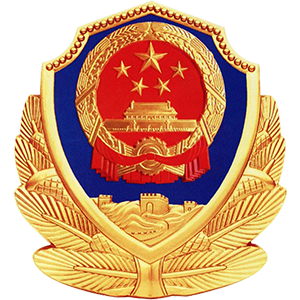RUIAN JIANGUO PLASTIC MACHINERY CO. LTD.

Your current position:
The Revolution of the Workshop: "Machine Replacement" Exchange Product Efficiency
Source:
|
Author:jianguo8557
|
Published time: 2023-09-26
|
793 Views
|
Share:
In Dongguan, the world's factory, the first "no-man's-man factory" opens up a picture of the future: all processes are run by computer-controlled robots, numerical control computer processing equipment, unmanned
In Dongguan, the world's factory, the first "no-man's-man factory" opens up a picture of the future: all processes are run by computer-controlled robots, numerical control computer processing equipment, unmanned transport vehicles and automated warehouse equipment. Technicians sit comfortably by the computer and monitor the production information of the workshop in real time through the central control system.
The Revolution of the Workshop: "Machine Replacement" Exchange Product Efficiency
At 8 o'clock in the evening, in the polishing workshop of Guangdong Changying Precision Technology Co., Ltd., 60 machines are grinding the frame structures of each mobile phone day and night. They are divided into 10 production lines, each of which is fed by an automatic conveyor belt. This process no longer requires any manpower. Each line has only three workers to look at the line and check it.
A few months ago, another 650 workers were needed to complete these processes. Luoweiqiang, assistant general manager of changying precision, told reporters that a robot hand could replace six to eight workers. Now, there are 60 workers in the grinding workshop, which will be reduced to 20 in the future.
What is quite interesting is that next to this "unmanned workshop" is the traditional artificial workshop. Today, it is abandoned and dark, with cobwebs tied to old-fashioned hand-polished equipment.
This is the first step in the "machine replacement" program. Chenqixing, chairman of changying precision company, said that the number of machine hands will increase to 1000 in the next two years. After the "machine replacement" plan is completed, the entire middle and background operators will not exceed 200 people, and 80 % of the processes will be unmanned.
At its CNC machine tool workshop in Dalong, Dongguan, there are now more than 2,000 workers busy. 鈥淚n two years, these people will either leave or be transferred to other jobs, and this workshop will be unmanned. " said Luoweiqiang.
Compared with many mature workers, the newly launched robot can only be regarded as a "novice", but the number and quality of products produced by it far exceed that of skilled workers and experts. A comparison of data on production lines hanging on the walls of the workshops shows that since the machine was put on duty, the rate of bad products has dropped from more than 25 % to less than 5 %, while production capacity has increased from more than 8,000 units per person to 21,000 units per month.
"The" machine replacement "can not be seen simply as a solution to the problem of employment, but it is an embodiment of industrial manufacturing automation, precision, intelligent upgrading and product quality improvement. " said Chenqixing.
Automation process encounters "tight money" and "poor skills"
The company is just a microcosm of the "factory of the world". Dongguan plans to complete 1000-1500 "machine replacement" applications by 2016. At the beginning of this year, Guangdong Province proposed to promote the "machine replacement" of 1950 industrial enterprises above designated size for a total of three years.
However, many companies that are interested in implementing machine replacements have encountered two major obstacles: "money is tight" and "technology is poor."
Luoweiqiang calculated an account for the reporter. A set of machine hands required 180,000 yuan. At present, the annual labor cost of a worker is about 60,000 yuan. The replacement rate of "machine replacement" in different processes is different. At this stage, "machine replacement" is not cost-effective.
For some companies, it is difficult to make progress because of financial bottlenecks. The reporter's investigation has learned that the robot equipment with high complexity and high precision is mainly imported. Only the robot hand is about 200,000 yuan per unit. If the entire supporting equipment is imported, a Taiwan group needs 450,000 yuan.
The total investment of 500 applications for "machine replacement" special funds received by the Dongguan Municipal Government will require 4.5 billion yuan, and some companies will invest hundreds of millions of yuan in automation upgrades. 鈥淚t is difficult for manufacturing companies themselves to come up with such a large amount of money for automatization. "Liuqingtang, chief of the technical Department of Dongguan Economic and Credit Bureau, said.
In addition to capital, technological research and development and application capabilities are the biggest obstacles to many companies that are interested in "machine replacement". Dengguojun, director of science and education Bureau of songshan lake high and new district of Dongguan city, said that the automation of the entire process can not simply be achieved by buying back a few robots from abroad, but also requires enterprises to have the talents and capabilities for applied research and development.
Take Changying Precision as an example. The company has a 50-person team dedicated to matching experiments and research and development of machine replacement production lines, and a team of more than 600 technical workers who can maintain and repair robot production lines. In addition, the company plans to train some workers in skills to meet the needs of new jobs.
Apocalypse of "No man's Works"
"No man's factory" is essentially a microcosm of industrial manufacturing intelligence and high-end. With the implementation of the "Made in China 2025" strategy, more and more "unmanned workshops" and "unmanned factories" will appear.
The reporter's squat survey found that the emergence of "no man's factory" and its application problems have three implications for "China's wisdom building."
Revelation 1: In regions with high levels of industrialization, we should promote the upgrading and automation of industrial innovation around "machine replacement" and create an "all-chain" ecological environment.
Dengguojun said that to achieve autonomous innovation and own brands of robots, it is necessary to take into account the six major groups of robotics inventors, enterprise entrepreneurs, industrial capitalists, application pioneers, base attendants, and industrial organizers in the policy formulation process.
鈥淲e need talent far more than we need money. " Some business owners told reporters. In order to attract talents, the Songshan Lake Base in Dongguan City also provides 100 talent apartments for the innovation team to stay free.
Revelation 2: actively deal with the phenomenon of "reducing people" and "increasing people" in the process of "machine replacement", reducing the number of general workers who can be duplicated, and increasing the number of new technology workers who can adapt to the profession.
The heads of many companies that promoted the machine replacement program frankly stated that in the future, the demand for general workers who only perform repetitive work will definitely decline, but the demand for professional skilled workers will increase significantly; In addition, enterprises need to expand reproduction because of the increase in the level of automation, which will increase the demand for new jobs.
Revelation 3: Nurture and support the automatic standard and demonstration enterprises to form the industry pull effect.
At present, there are less than 10 enterprises above the scale at the Songshan Lake Robot Industrial Base in Dongguan, and the scale of enterprises is generally still small, and there is a lack of industrial organizers and industry leaders. This is also a bottleneck encountered by other robot industrial parks in China.
With the heating up of the robot industry, like many new industries in the past, there has been a "robot fever" all over the country, and large and small industrial parks have continued to emerge. Tanjunmin, director of Li Qun Automation Co., Ltd., which is engaged in the development and production of industrial robots, said: "To compete with international robot giants, we must also pool funds and talents to cultivate several benchmark companies. In this way, our national robot industry will have international competitiveness. The "machine replacement" program and industrial intelligence can be popularized. "
The Revolution of the Workshop: "Machine Replacement" Exchange Product Efficiency
At 8 o'clock in the evening, in the polishing workshop of Guangdong Changying Precision Technology Co., Ltd., 60 machines are grinding the frame structures of each mobile phone day and night. They are divided into 10 production lines, each of which is fed by an automatic conveyor belt. This process no longer requires any manpower. Each line has only three workers to look at the line and check it.
A few months ago, another 650 workers were needed to complete these processes. Luoweiqiang, assistant general manager of changying precision, told reporters that a robot hand could replace six to eight workers. Now, there are 60 workers in the grinding workshop, which will be reduced to 20 in the future.
What is quite interesting is that next to this "unmanned workshop" is the traditional artificial workshop. Today, it is abandoned and dark, with cobwebs tied to old-fashioned hand-polished equipment.
This is the first step in the "machine replacement" program. Chenqixing, chairman of changying precision company, said that the number of machine hands will increase to 1000 in the next two years. After the "machine replacement" plan is completed, the entire middle and background operators will not exceed 200 people, and 80 % of the processes will be unmanned.
At its CNC machine tool workshop in Dalong, Dongguan, there are now more than 2,000 workers busy. 鈥淚n two years, these people will either leave or be transferred to other jobs, and this workshop will be unmanned. " said Luoweiqiang.
Compared with many mature workers, the newly launched robot can only be regarded as a "novice", but the number and quality of products produced by it far exceed that of skilled workers and experts. A comparison of data on production lines hanging on the walls of the workshops shows that since the machine was put on duty, the rate of bad products has dropped from more than 25 % to less than 5 %, while production capacity has increased from more than 8,000 units per person to 21,000 units per month.
"The" machine replacement "can not be seen simply as a solution to the problem of employment, but it is an embodiment of industrial manufacturing automation, precision, intelligent upgrading and product quality improvement. " said Chenqixing.
Automation process encounters "tight money" and "poor skills"
The company is just a microcosm of the "factory of the world". Dongguan plans to complete 1000-1500 "machine replacement" applications by 2016. At the beginning of this year, Guangdong Province proposed to promote the "machine replacement" of 1950 industrial enterprises above designated size for a total of three years.
However, many companies that are interested in implementing machine replacements have encountered two major obstacles: "money is tight" and "technology is poor."
Luoweiqiang calculated an account for the reporter. A set of machine hands required 180,000 yuan. At present, the annual labor cost of a worker is about 60,000 yuan. The replacement rate of "machine replacement" in different processes is different. At this stage, "machine replacement" is not cost-effective.
For some companies, it is difficult to make progress because of financial bottlenecks. The reporter's investigation has learned that the robot equipment with high complexity and high precision is mainly imported. Only the robot hand is about 200,000 yuan per unit. If the entire supporting equipment is imported, a Taiwan group needs 450,000 yuan.
The total investment of 500 applications for "machine replacement" special funds received by the Dongguan Municipal Government will require 4.5 billion yuan, and some companies will invest hundreds of millions of yuan in automation upgrades. 鈥淚t is difficult for manufacturing companies themselves to come up with such a large amount of money for automatization. "Liuqingtang, chief of the technical Department of Dongguan Economic and Credit Bureau, said.
In addition to capital, technological research and development and application capabilities are the biggest obstacles to many companies that are interested in "machine replacement". Dengguojun, director of science and education Bureau of songshan lake high and new district of Dongguan city, said that the automation of the entire process can not simply be achieved by buying back a few robots from abroad, but also requires enterprises to have the talents and capabilities for applied research and development.
Take Changying Precision as an example. The company has a 50-person team dedicated to matching experiments and research and development of machine replacement production lines, and a team of more than 600 technical workers who can maintain and repair robot production lines. In addition, the company plans to train some workers in skills to meet the needs of new jobs.
Apocalypse of "No man's Works"
"No man's factory" is essentially a microcosm of industrial manufacturing intelligence and high-end. With the implementation of the "Made in China 2025" strategy, more and more "unmanned workshops" and "unmanned factories" will appear.
The reporter's squat survey found that the emergence of "no man's factory" and its application problems have three implications for "China's wisdom building."
Revelation 1: In regions with high levels of industrialization, we should promote the upgrading and automation of industrial innovation around "machine replacement" and create an "all-chain" ecological environment.
Dengguojun said that to achieve autonomous innovation and own brands of robots, it is necessary to take into account the six major groups of robotics inventors, enterprise entrepreneurs, industrial capitalists, application pioneers, base attendants, and industrial organizers in the policy formulation process.
鈥淲e need talent far more than we need money. " Some business owners told reporters. In order to attract talents, the Songshan Lake Base in Dongguan City also provides 100 talent apartments for the innovation team to stay free.
Revelation 2: actively deal with the phenomenon of "reducing people" and "increasing people" in the process of "machine replacement", reducing the number of general workers who can be duplicated, and increasing the number of new technology workers who can adapt to the profession.
The heads of many companies that promoted the machine replacement program frankly stated that in the future, the demand for general workers who only perform repetitive work will definitely decline, but the demand for professional skilled workers will increase significantly; In addition, enterprises need to expand reproduction because of the increase in the level of automation, which will increase the demand for new jobs.
Revelation 3: Nurture and support the automatic standard and demonstration enterprises to form the industry pull effect.
At present, there are less than 10 enterprises above the scale at the Songshan Lake Robot Industrial Base in Dongguan, and the scale of enterprises is generally still small, and there is a lack of industrial organizers and industry leaders. This is also a bottleneck encountered by other robot industrial parks in China.
With the heating up of the robot industry, like many new industries in the past, there has been a "robot fever" all over the country, and large and small industrial parks have continued to emerge. Tanjunmin, director of Li Qun Automation Co., Ltd., which is engaged in the development and production of industrial robots, said: "To compete with international robot giants, we must also pool funds and talents to cultivate several benchmark companies. In this way, our national robot industry will have international competitiveness. The "machine replacement" program and industrial intelligence can be popularized. "

Contact Us



Copyright © 2004 Ruian Jianguo Plastic Machinery Co. Ltd.. All Rights Reserved 浙ICP备18057607号-2

Jobs
News

Sweep the phone. Focus on the official website.
Products

About Us





